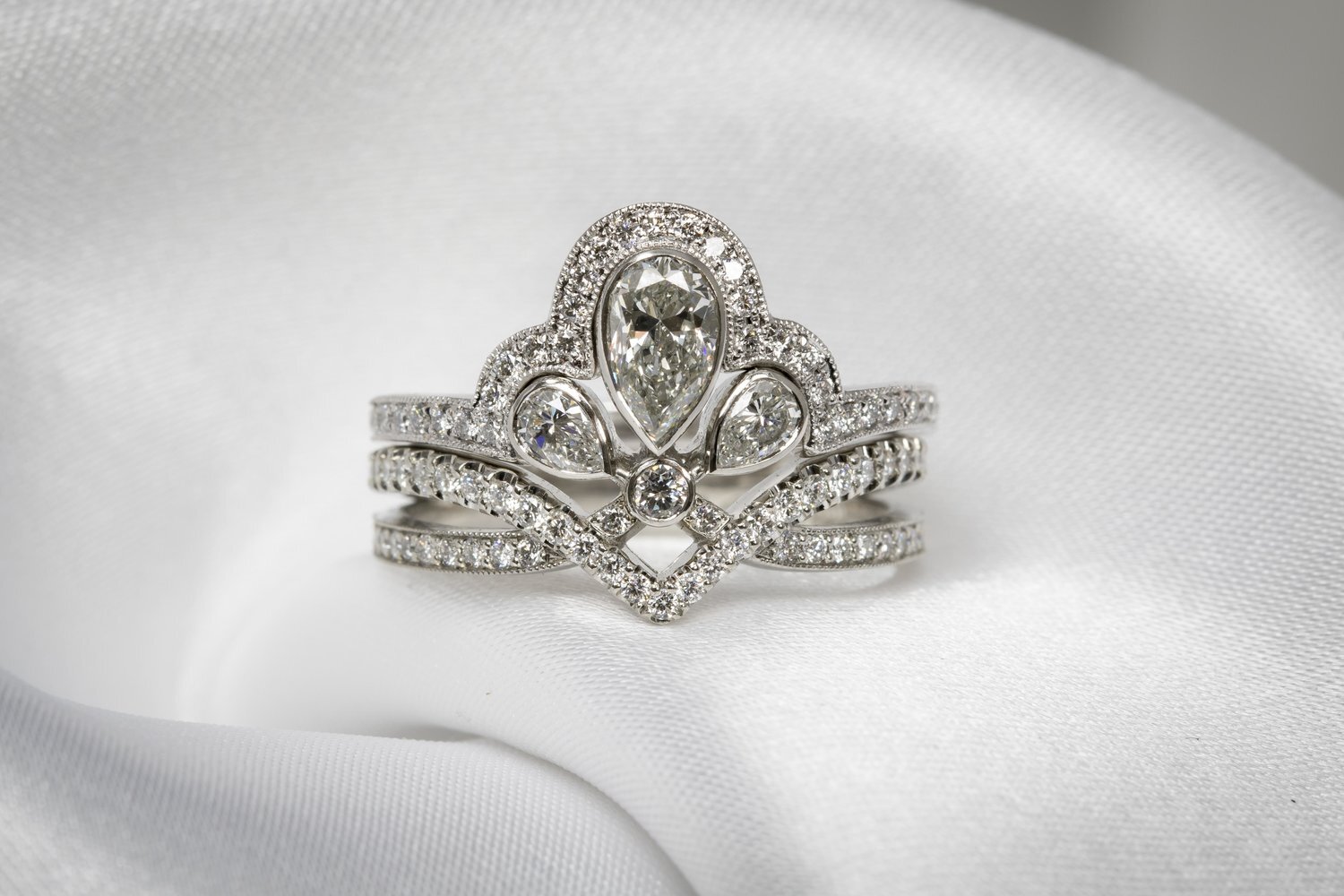How modern technology can help create a beautiful wedding ring
Both diamond and platinum rings fitting perfectly together.
How modern technology helps create a beautiful wedding ring
The title should have the additional line “with some help from the hands of our skilled jewellers” of course and for us, it is a partnership made in heaven!
By using a fine detail 3d scanner we are able to scan an engagement ring in less than 30 minutes. The 3d scan data captures amazing detail from the original ring - part of the scanning process means the object to be scanned should not have a reflective surface and so we have to spray on a fine white powder to give the surface a matt, chalky appearance. This coating fills some of the finer detail but we can still usually read the tiny hallmarks on the inside of the ring shank.
I have linked two videos from different areas of our website together with the final video of the series which show the steps involved. From a 3d scan, through the cad design work to the final preparation work of the rough cast platinum ring and the highly skilled work of the diamond setter.
In the past we have used other methods of making a close fitting, shaped ring mount. It is possible to roll out gold into a square wire form and bend the metal into a curve quite easily but the style of the Tiara ring needed a close fitting design that followed a convoluted shape of the head of the ring and the three pear shaped diamonds. The making of this by hand would need partial cutting through the band at the points where it was to be have an acute angle which would mean 4 solder joints in the head of the new ring.
Another method we used was to hand carve a wax model to fit this shape and cast it as one piece so having no joints at all. The way we show in the videos below is similar in that a wax is cast to produce a single ring without joins but the use of CAD allows us to be much more accurate especially with the placement of the stone holes - and it is a great deal quicker!
Once we have a 3d scan of an engagement ring in our library of files, a surprise fitted eternity ring could be supplied that will fit perfectly at a later stage without the wearer knowing what was being planned and without having to take off the engagement ring.
Only last week, we scanned a customer’s single precious, remaining earring and we are in the process of making an exact earring to match using the same process - scan, cad and cast, plus finishing work from our goldsmiths. Sometimes it is possible to take a mould from an earring in the more traditional way and produce a wax model from this rubber mould which can then be cast but with normal shrinkage the new earring will be 5% or more smaller than the original. Earrings are often left and right handed or opposite patterns which of course nullifies that mould-taking method but with a 3d scan, the product is a digital file that can be sized, reflected and adapted to make the perfect match.
Before buying our first 3d scanner, I listed all the uses I could think of for jewellery to try to justify the expense and there wasn’t many but luckily, shaped wedding rings are where jewellery scanners are most used and for us there is a good demand. Occasionally we will have odd shaped stones which we have to mount in jewellery. By scanning the stones we can bring in a copy of the stone into our cad programs so the jewellery mount fits perfectly where beforehand, it was too easy to make mistakes. If you have any thoughts on how jewellery scanning could help you, come and talk to us and we will do our best to help.
Tim Roe.

